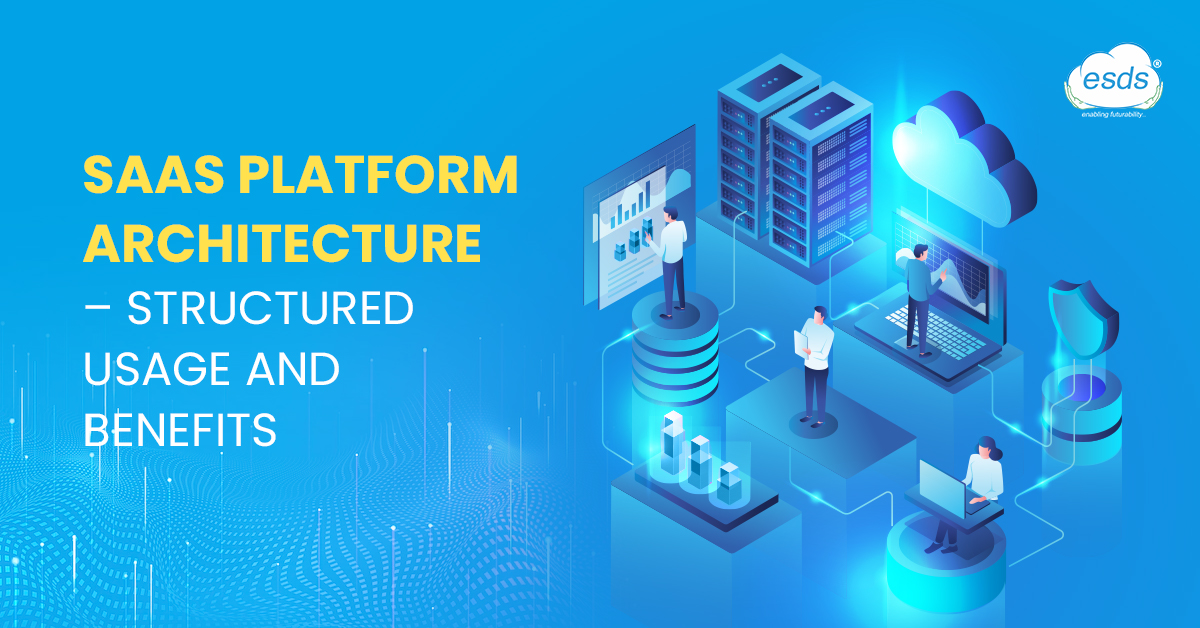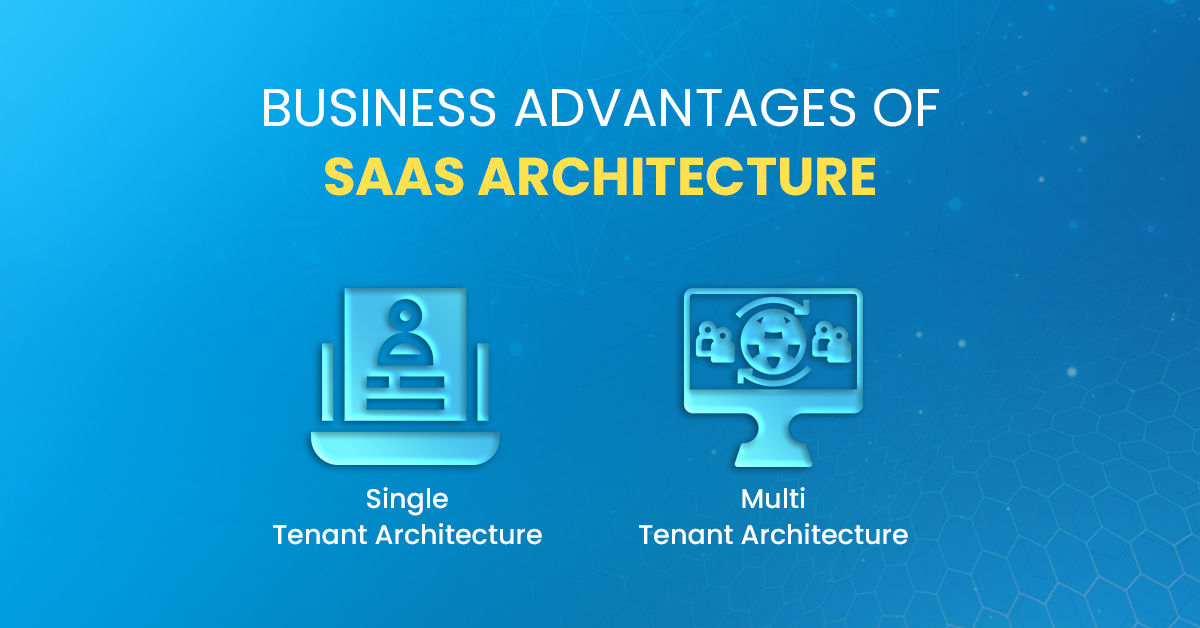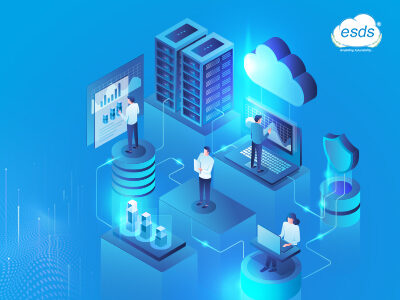SaaS Platform Architecture – Structured Usage and Benefits
The Software-as-a-Service (SaaS) model is considered among significant architectures that can be used to deliver services to customers from anywhere at any time. With the perks of not having to worry about software updates, purchases, or other maintenance hassles, SaaS rules them out. Along with Infrastructure as a Service (IaaS), Platform as a Service (PaaS), and Desktop as a Service (DaaS) among others, SaaS is all a part of cloud computing’s nomenclature.

SaaS architecture is a method that allows vendors to host applications on a remote server and later deliver them to the organization’s end-user over the internet. This creates a single configuration model that can be shared by multiple organizations. Allowing organizations access to the same hosted applications along with the same operating system, network, hardware, and other elements. These architecture applications are handled by the provider who also offers updates and patches if required. The updates are delivered over the internet eliminating the need to reinstall new versions of the application.
Business Advantages of SaaS Architecture
SaaS architecture allows businesses to reach the audience on a wider scale and offer their products and services on a global level as well whilst ensuring control over their product or service. Wider reach is one of the many reasons why businesses are opting for a SaaS-based model for their IT structure. To serve more customers, there is no need to purchase more heavy-duty hardware. With SaaS architecture components that offer flexibility and scalability for scaling compute resources that are too on-demand.

Another advantage of SaaS architecture is the ability to deliver seamless services with the access to latest cloud-native technologies. This means businesses can make use of applications fully tested versions that are bug-proof or random errors that could cause downtime. This also works as a time-saving and cost-saving benefit for businesses on resources for building and testing software applications.
In case of security or data breach which can cause data loss, an automatic built-in backup in the SaaS architecture model can help save from disaster situations. SaaS setups store data in local servers and data centers, which can ultimately save time and loss of critical data. Since data has become an invaluable asset, businesses are investing heavily and strategically in terms of finances and resources into gathering, storing, evaluating, and managing this data. With SaaS, architecture businesses can benefit from disasters that can harm their data and cost a fortune.
Another valuable advantage of SaaS architecture is cost-effective software that won’t burn a hole into your business’s financial accounts. This eliminates the need for expensive tools and technical support even for short-term projects with the help of hosted applications. In terms of maintenance, SaaS vendors take care of all the backend infrastructure, which again saves time, money, and resources for businesses. Further, a SaaS application can be deployed in the cloud using 2 types of models, a single-tenant and a multi-tenant architecture.
Single-Tenant Architecture
In this model, a single instance of the application, the infrastructure, and the database is used for serving only a single user/tenant. As this model allows only one instance per every SaaS server, it has a specific design and architecture making it distinctive. In the single-tenant model database or applications can’t be shared between clients as all of them have their instances. Although all the users have access to the same application that is built on the same code, vendors can help with configuration or patching, or any updates which are again efficient and cost-saving. This model also enables clients to make alterations to the User Interface and customize the application but they won’t have the access to the coding. Mostly, single-tenant architecture systems are adapted to a third-party cloud or a private cloud service, which is an important factor considered.
Multi-Tenant Architecture
In the multi-tenant architecture model, a single instance or environment allows multiple users/tenants to access and utilize application infrastructure. This infrastructure is completely shared and transparent for the end-users. To avoid the entire endless coding complications which can be very time-consuming, the multi-tenant model offers one codebase and a code repository that makes this process uncomplicated. Since one application environment can be shared with multiple users, costs for hundreds of servers are reduced to one server.
There are 2 approaches for a multi-tenant model – A single application instance with several databases and a Single application instance with one database. In the first approach, users entering the application environment get access to different types of databases, which makes the application more resourceful and scalable. Whereas in the single application instance with access to one database, multiple users entering the environment can make use of that one database. Although it’s a cheaper and quicker option until the users fill up the database and move on to the other one, it lacks scalability.
In conclusion
Both the types of SaaS architectures have their own set of advantages and disadvantages, which can be evaluated and further opted as per the business type and requirement. Overall, SaaS architecture applications are a leading path away from traditional on-premise application hosting. The effectively improved security standards are essentially the reason for businesses to steer away from on-premise options. IT leaders across various industries keep looking for the best ways to save time, money, and resources and use them in the most efficient ways to help the business grow in this competitive market in the digital transformation era.
- Unlocking Data’s Time Machine: The Importance of Database Point-in-Time Recovery - August 2, 2023
- Future-Proof You’re Data: Navigating the World of Enterprise Backup and Data Protection Solutions - July 7, 2023
- Unleashing the Potential of Long-Term Data Retention: Exploring Trustworthy Backup - May 31, 2023
